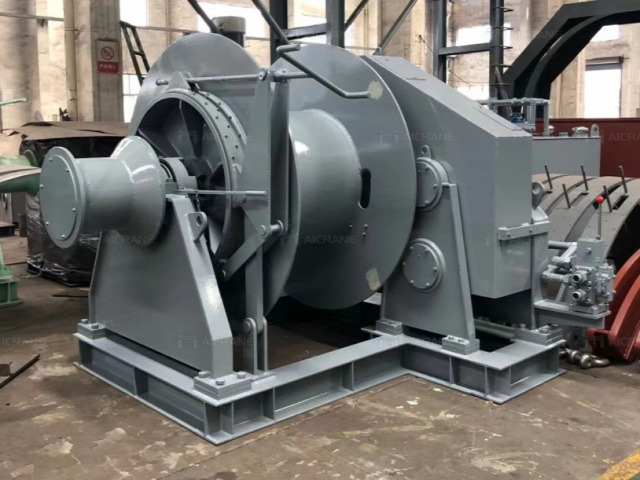Hydraulic towing winches are essential equipment on vessels used for towing operations, assisting in the safe movement of other ships, barges, or floating structures. Proper installation of a hydraulic towing winch is critical to ensure its reliable performance and the safety of the crew and cargo during towing operations. In this article, we present a step-by-step guide to help shipowners, operators, and marine engineers successfully install a hydraulic towing winch on their vessels.

Step 1: Select the Right Location
Choose an appropriate location on the vessel's deck to install the hydraulic towing winch. The location should provide adequate space for the winch, safe access for operators, and proper alignment with the towing point. Consider the vessel's structural integrity and weight distribution to ensure the winch's installation does not compromise the vessel's stability.
Step 2: Prepare the Mounting Foundation
Ensure the mounting foundation on the deck is strong and secure enough to support the weight and force exerted by the hydraulic towing winch. Use suitable materials, such as steel plates or reinforced platforms, to create a stable and durable mounting base.
Step 3: Align the Winch
Proper alignment of the hydraulic towing winch is crucial to ensure smooth operation and prevent undue stress on the winch and towing components. Align the winch so that the towing wire or rope spools smoothly onto the drum without any obstructions or sharp angles.
Step 4: Install the Winch
Carefully place the hydraulic towing winch onto the prepared mounting foundation. Use appropriate lifting equipment and ensure proper safety precautions are in place during the winch installation process. Secure the winch in its designated location using high-quality bolts and fasteners.
Step 5: Connect Hydraulic Hoses and Power Source
Connect the hydraulic hoses from the winch to the vessel's hydraulic power system. Ensure that the connections are tight and leak-free to maintain the integrity of the hydraulic system. Test the hydraulic power source to verify that it can supply the required pressure and flow rate to operate the winch efficiently.
Step 6: Install Control System
Mount the control system for the hydraulic towing winch in a location that allows easy access for operators. Ensure that all control components, such as joysticks, levers, and emergency stop buttons, are securely installed and functioning correctly.
Step 7: Install Wire or Rope
Install the towing wire or rope on the winch drum according to the manufacturer's recommendations. Properly spool the wire or rope to prevent tangling and ensure smooth operation during towing operations. Inspect the wire or rope for any signs of wear or damage and replace if necessary.
Step 8: Perform Functionality Test
Before putting the hydraulic towing winch into active service, conduct a thorough functionality test. Check all controls, safety features, and hydraulic connections to ensure they are working as intended. Test the winch under various load conditions to validate its performance.
Step 9: Conduct Load Tests
Perform load tests to verify the hydraulic towing winch's capacity and safety. Gradually apply increasing loads while monitoring the winch's performance, ensuring that it can handle the specified loads without exceeding its rated capacity.
Step 10: Provide Operator Training
Train the crew members responsible for operating the hydraulic towing winch. Ensure they understand the winch's controls, safety procedures, and best practices for towing operations. Proper operator training is vital for safe and efficient towing activities.
Conclusion:
The installation of a hydraulic towing winch requires meticulous planning, proper alignment, and attention to detail. By following this step-by-step guide, vessel owners and marine engineers can ensure a successful installation that leads to the reliable performance of the hydraulic towing winch during towing operations. Regular maintenance and periodic inspections will further enhance the winch's longevity and efficiency, contributing to safe and efficient towing operations at sea.

